Susie Vickery worked as a theatrical costumier for 20 years in Australia and the UK.
The next 20 years were spent in Nepal and India where she studied embroidery by distance learning and began making her own embroidered artwork.
Susie’s embroideries have been exhibited in the UK, Australia and Norway and featured in numerous magazines and books, including Selvedge and Embroidery and Textiles by Mary Schoeser.
In this article, part of our From conception to creation series, Susie talks us through the history of her puppet creation Citizen Labillardière.
We discover what inspired her and her design and making process. We also find out about her puppets’ future globetrotting adventures.
Name of piece: Jacques-Julien Houtou de Labillardière: Citizen Botanist
Year of piece: 2018
Size of piece: 66cms high
Materials used: Antique linen, cotton and silk
Techniques used: Puppetry, embroidery, costume making, animation.
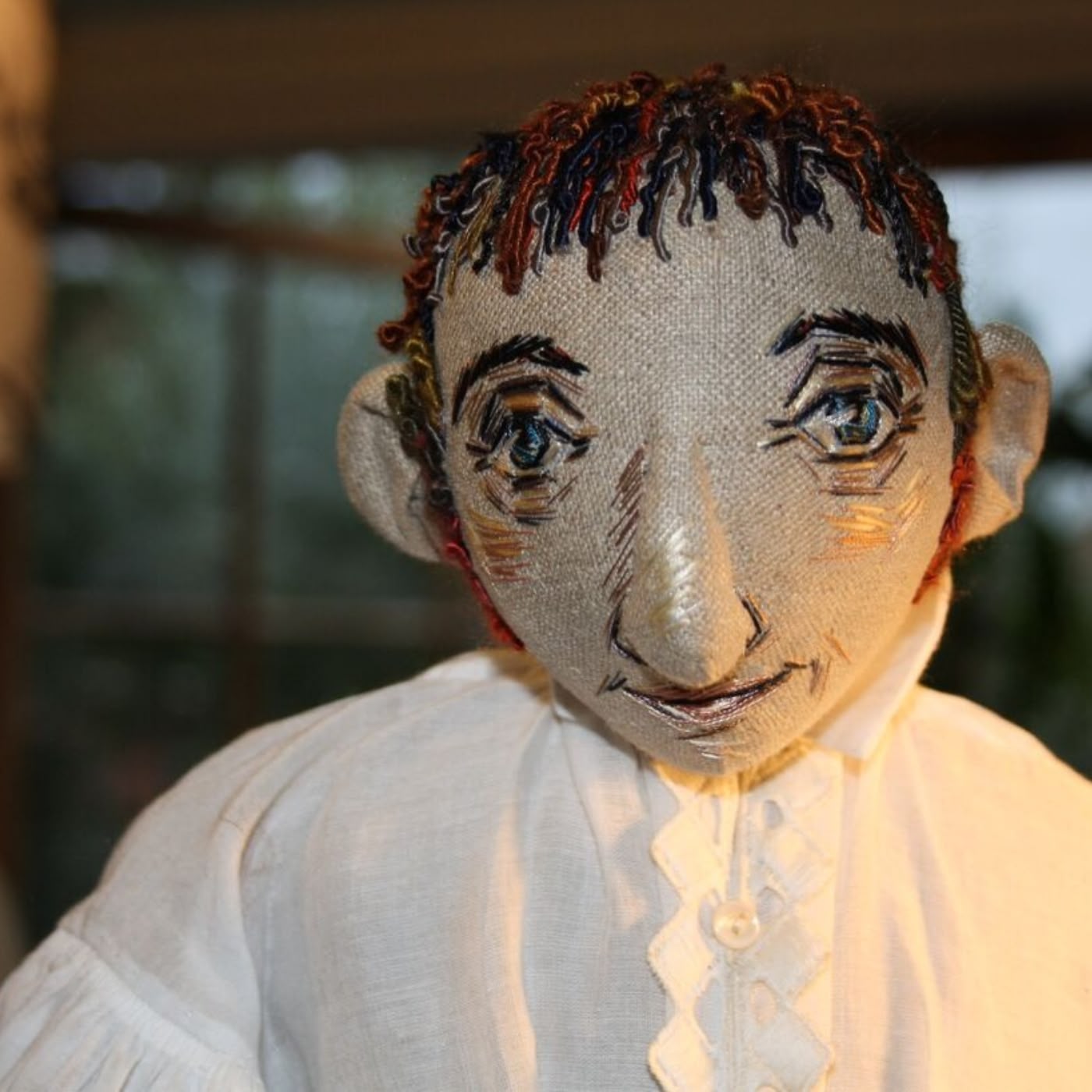
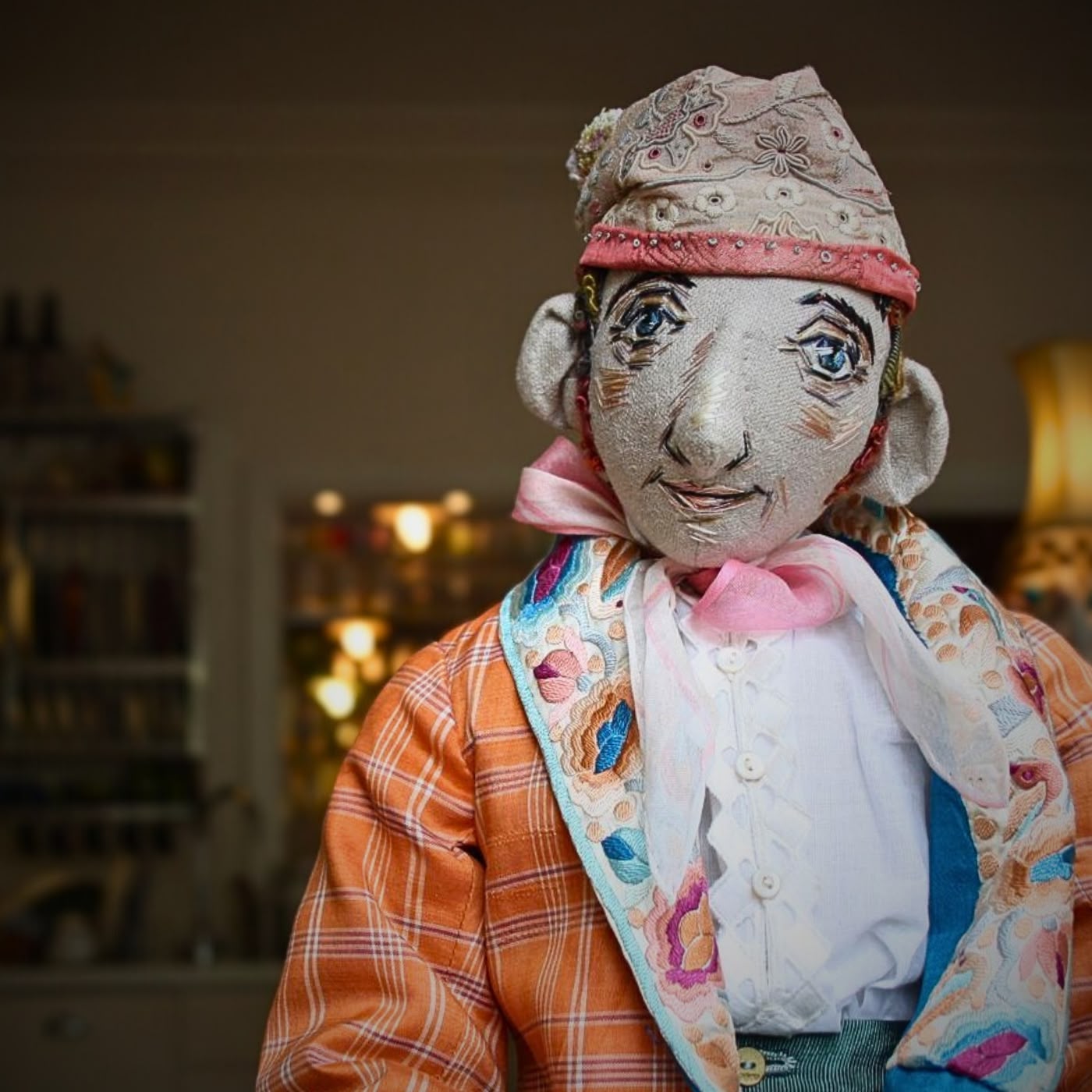
My favourite things
TextileArtist: How did the idea for the piece come about? What was your inspiration?
Susie Vickery: For the last 20 years I have been doing embroideries and working with community art and craft projects, but I have missed my costume making.
I have always tried to get movement into my embroideries with animation and automata as I want them to be more than static images on the wall, making flat puppets and animating them, and putting them into automata.
For my new project I decided to combine all of my favourite things: costume making, puppets, embroidery and animation, and perhaps a little social commentary as well.
I have been regularly teaching an annual masterclass in 19th century men’s tailoring at the Victorian College of the Arts in Melbourne. We work in half scale for ease and speed.
I have the students begin by making a half-scale men’s dress stand on which to model their costumes. They then make a half-scale 19th century waistcoat and tailcoat.
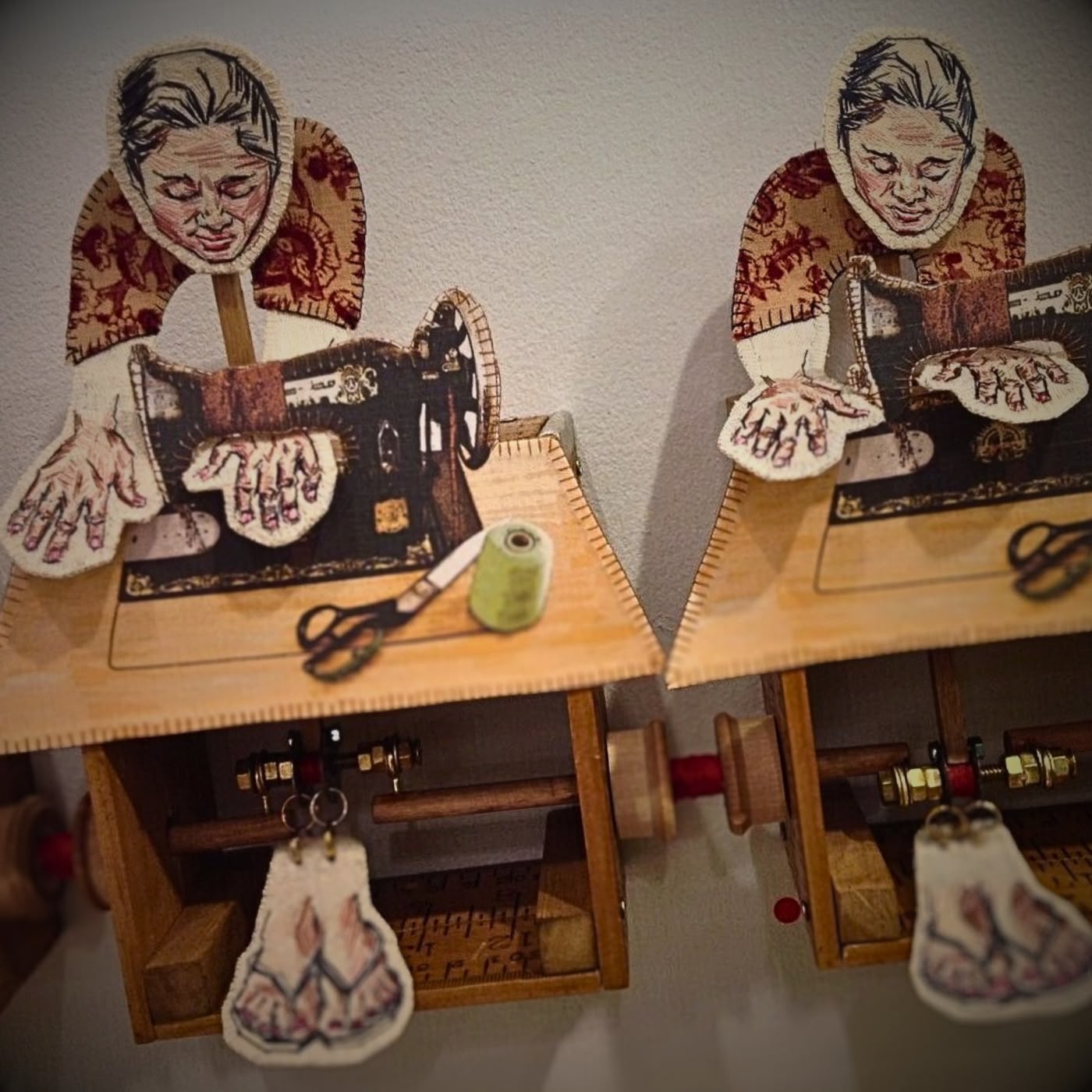
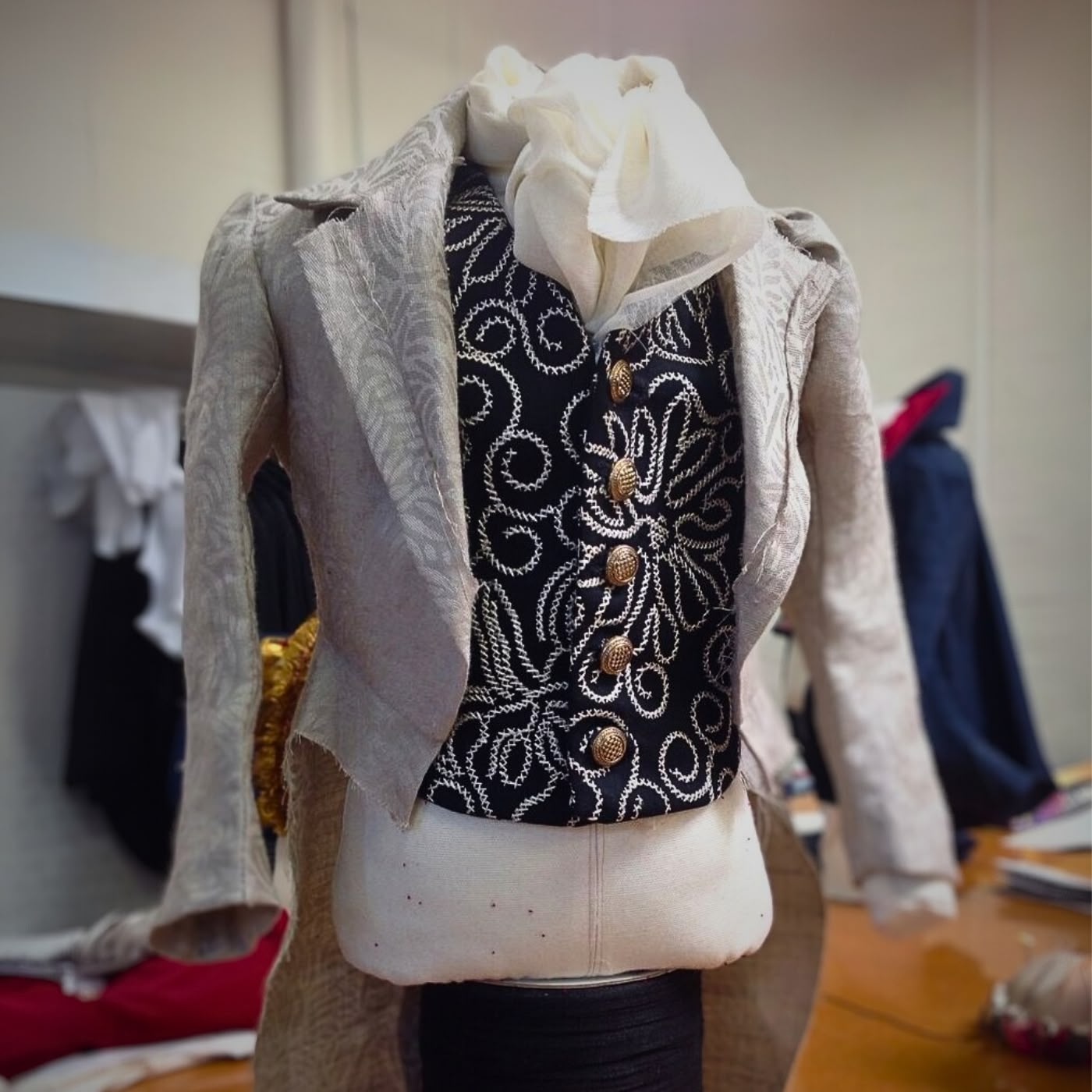
I loved the technical challenge of making the first prototype for the stand. One of my favourite things about making automata and animations was the problem solving, working out how to achieve something technical and learning all sorts of new skills in the process.
I enjoyed working on this reduced scale. It makes things less unwieldy and also means that I can use all the scraps of lovely fabric that I have been hoarding for years.
So the germ of an idea for a new project sprouted. I would make a puppet. He would be embroidered, he would wear fabulous 19th century costumes, and then I would make animations with him travelling around with me.
But why would he be travelling, and why would he be wearing lots of different outfits?
Perhaps he could be a 19th century plant hunter, plus a bit of a dandy, and a French dandy to boot.
In an idle moment I thought of googling 19th century French plant hunters. I came across the most wonderful man, Jacques-Julien Houtou de Labillardière. Not only did he fit my profile, but he had also come to my birthplace, Western Australia, to which I had recently moved back.
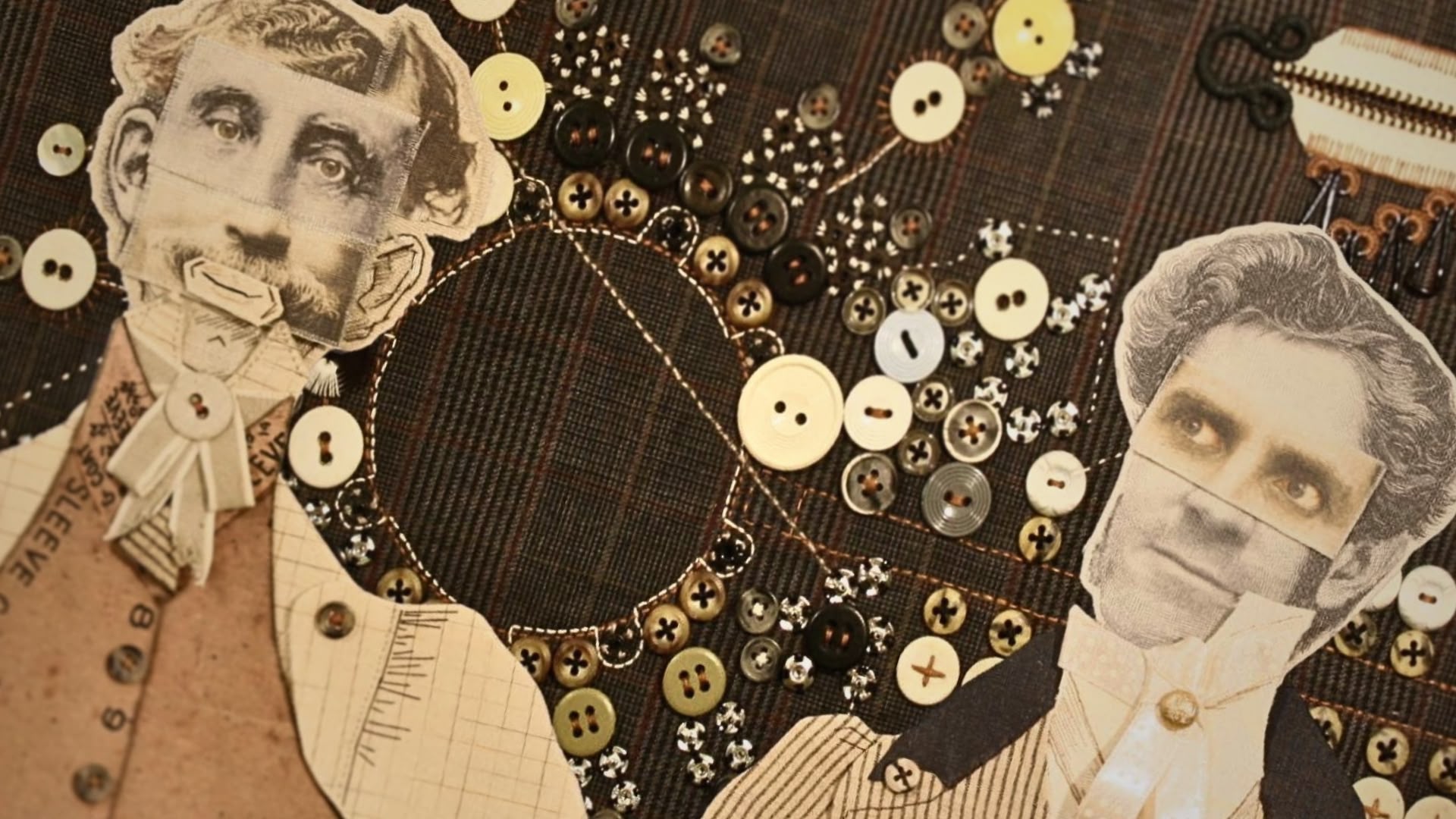
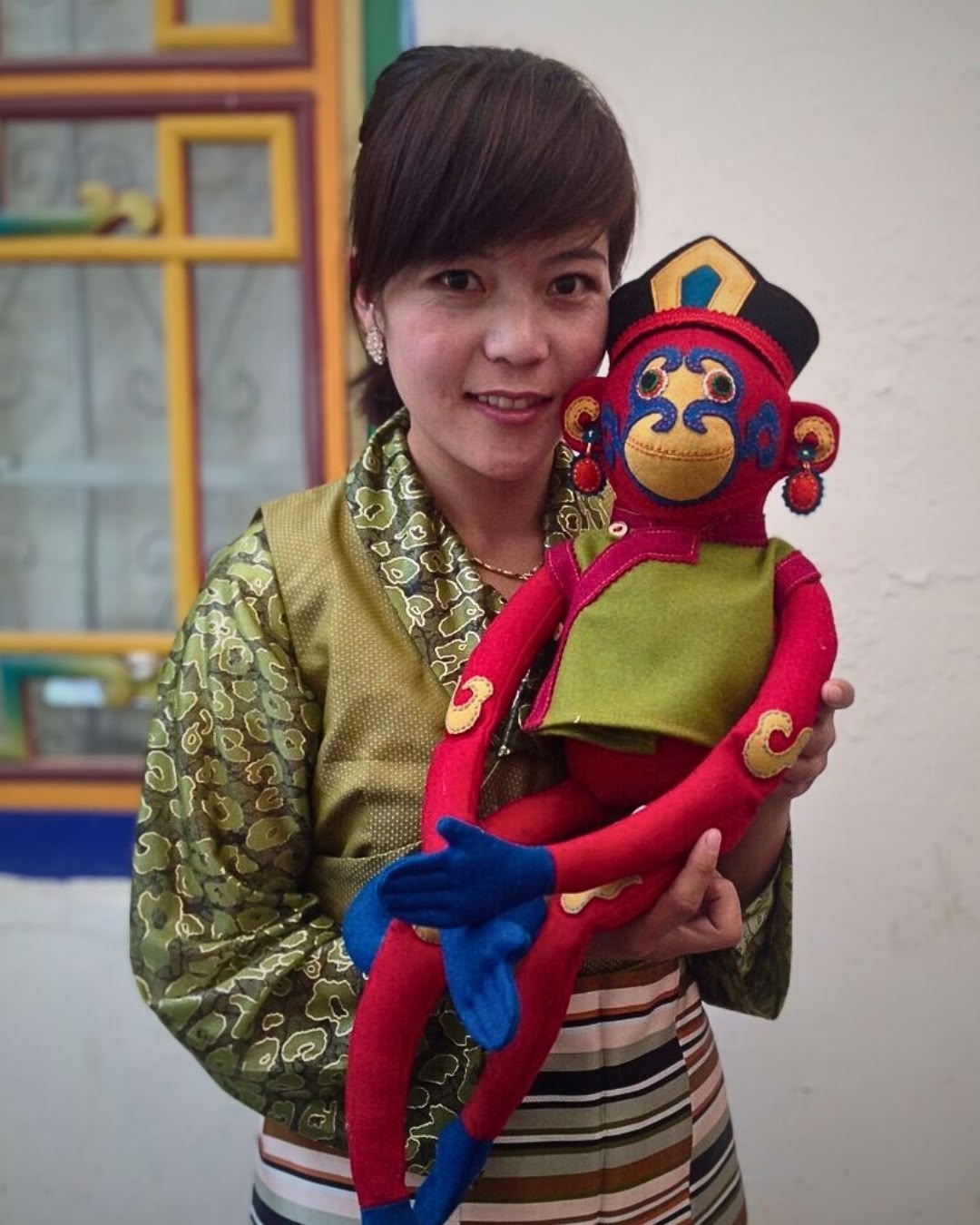
Coming home
Everything was aligned. I had first left Australia in 1984. In late 2016 my husband and I bought a house in Fremantle so that I could spend more time there with my elderly mother. So in a way, this project is my homecoming.
It is also about the devastation I see being wreaked in Australia and the world on the natural environment through rampant development and climate change. I see the natural bushland being rapidly eaten up and the marine environment trashed.
In my travels in India and Nepal I am depressed to see unchecked building on virgin land and the devastating consequences of air pollution. I compare this to the journals of Labillardière, travelling through seas full of marine life and arriving on pristine shores.
I am also learning the history of Australia that we were never taught at school. I grew up with French place names; Geographe Bay, Esperance and Leschenault, knowing nothing about the French exploration of the coastline as we were only taught the British version of history. It is also a wonderful time of learning the indigenous history that was also never taught.
Labillardiere’s interactions with Tasmanian aboriginals was one of curiosity and willingness to learn. Within a few decades all that changed as the settlers hunted the original inhabitants almost to extinction. And we have carried on our destruction of the natural world and the indigenous people for the following 200 years.
My time-travelling botanist will observe both the good and the bad changes that he sees.
What research did you do before you started to make?
After finding my subject I began to research him. There is a wealth of information out there. I found his journal online from the wonderful Project Gutenberg, complete with illustrations. I also ordered his biography from Melbourne University Press Citizen Labillardière by Edward Duyker.
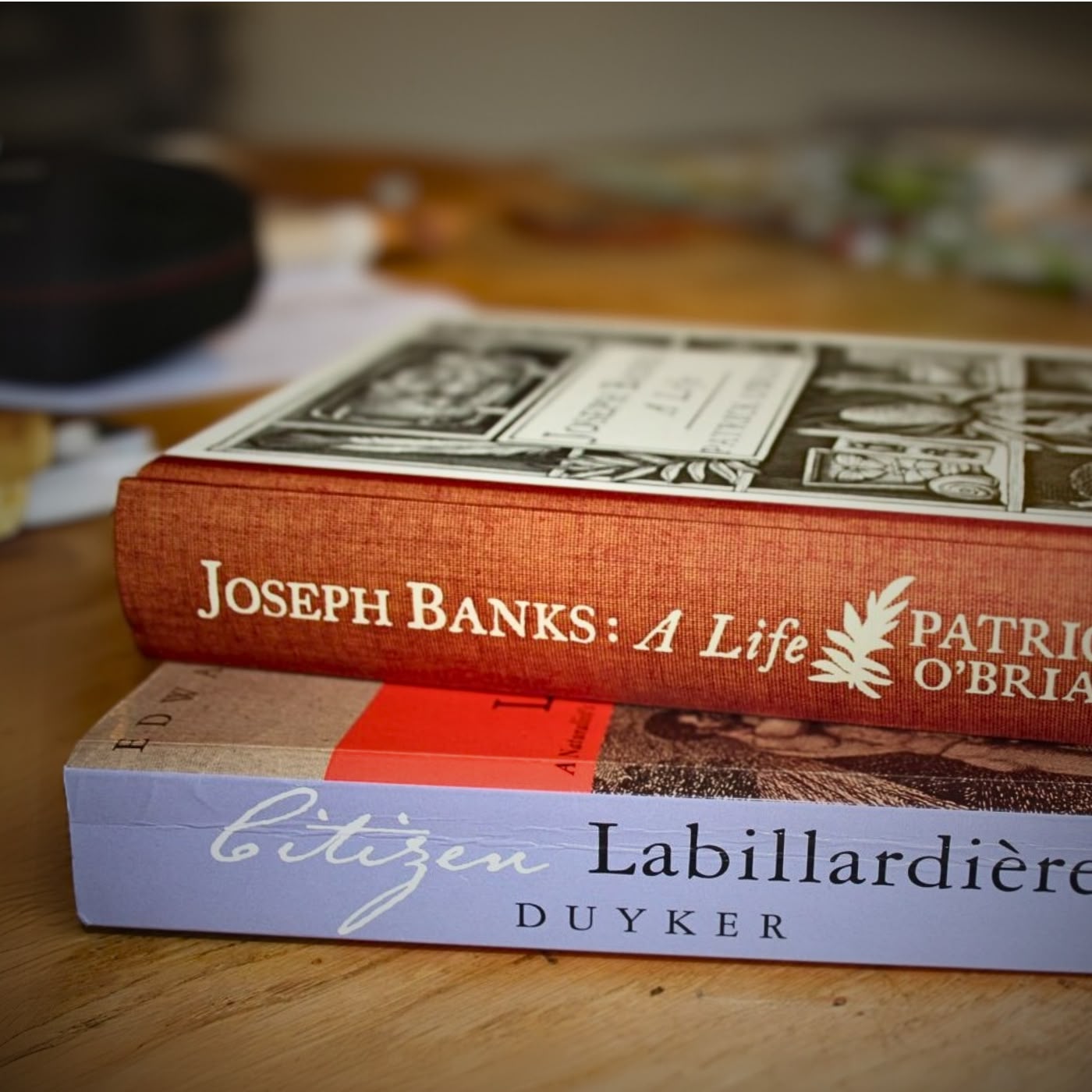
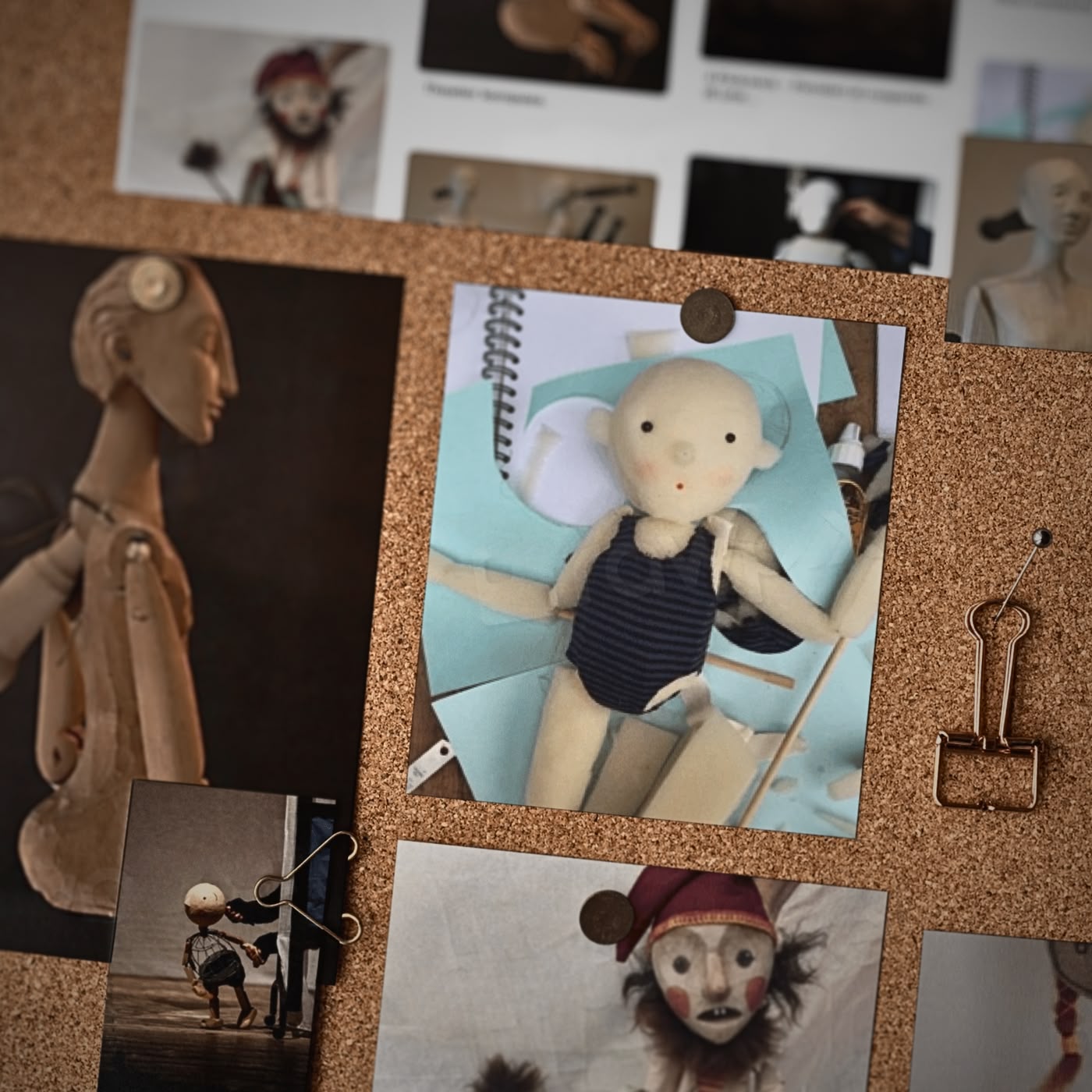
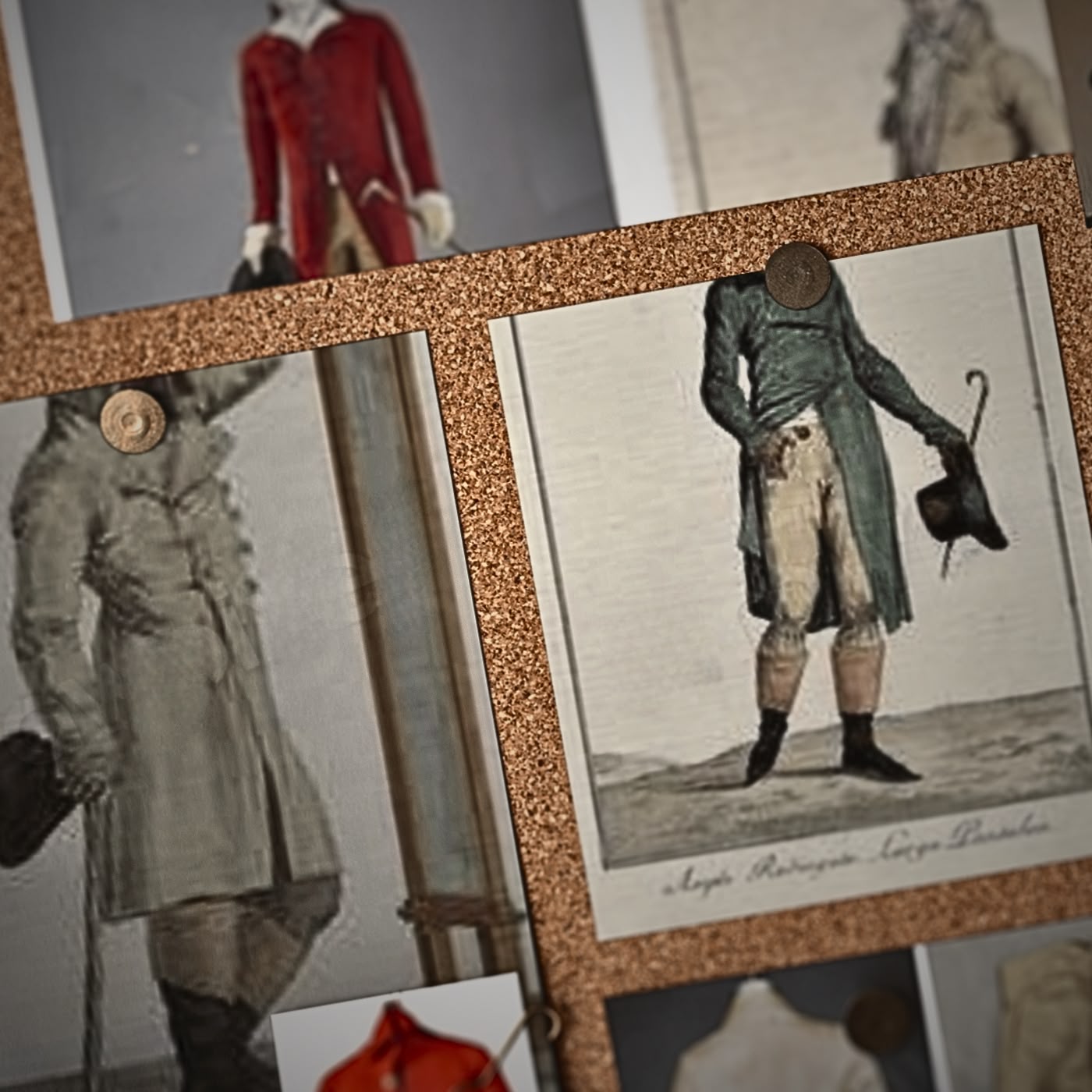
My neighbour in Australia, the textile artist Holly Story, heard about my project and lent me a book about the botanising of Australia and the south pacific called the Flower Chain.
She works with natural dyes and plant materials and has inspired me to include these in his costumes. I plan to dye fabrics with the plants that he described, or which are named after him, then make them into outfits for him.
I then researched how I would make him. I pored over endless puppetry and doll-making websites, researching joints, styles and making techniques.
I settled on making him as a rod puppet with ball joints, with the rods removable for the photos.
I also researched his costumes. I have endless Pinterest files of period costumes.
It has been hard to get images of normal dress for ship-going naturalists, a pretty specialised area, but there is an image of two Europeans interacting with Aboriginal people in Tasmania and one of them is thought to be Labillardière.
I also searched through my costume books and journals from the Costume Society. My favourite books are The Cut of Men’s Clothes by Nora Waugh, and Waistcoats: From the Hopkins Collection 1720-1950, published by the School of Historical Dress.
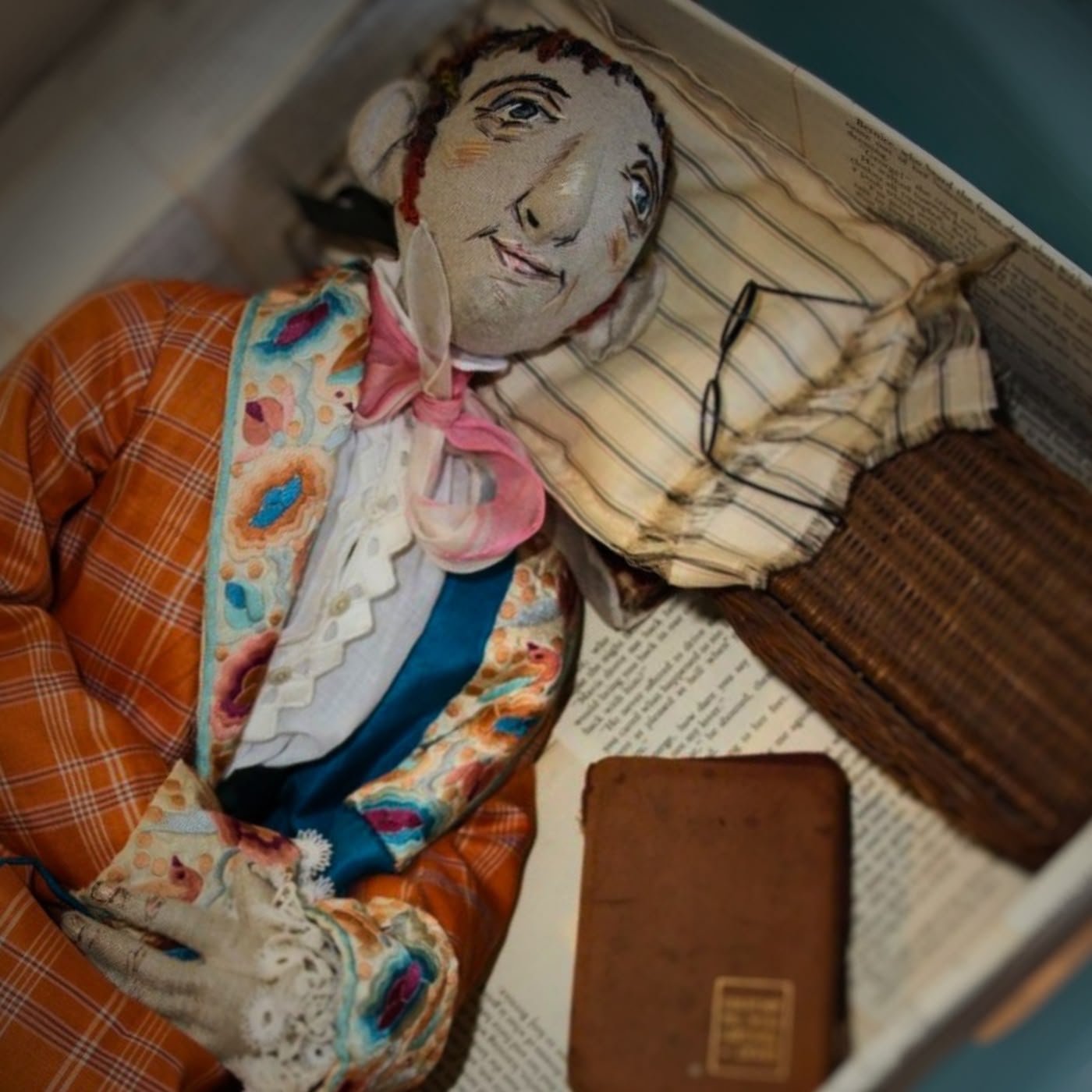
A story in each thread
What materials were used in the creation of the piece? How did you select them? Where did you source them?
Very early on I decided to use antique German mangle cloth for his body. I have bought a couple of these in the past to embroider on and love their solidity.
They are a tightly woven red-edged natural linen, beautiful to stitch into with a gorgeous sheen. I bought mine over the years from the Cloth Shop in Portobello Road where they stock a range of antique fabrics.
His clothing is using up some of the fabric that I have amassed over the years, each piece with a story. His Banyan (dressing gown) is made from an antique Burmese Chin lungi given to me by friends in Myanmar when I was working there.
The lining is an old silk sari from India and the collar and cuffs are made of an antique Parsi embroidered sari border.
His slippers are from Hmong cutwork pieces that I bought in Kathmandu about 18 years ago. I hestitated before cutting up these treasures, but felt that I was giving them a new life.
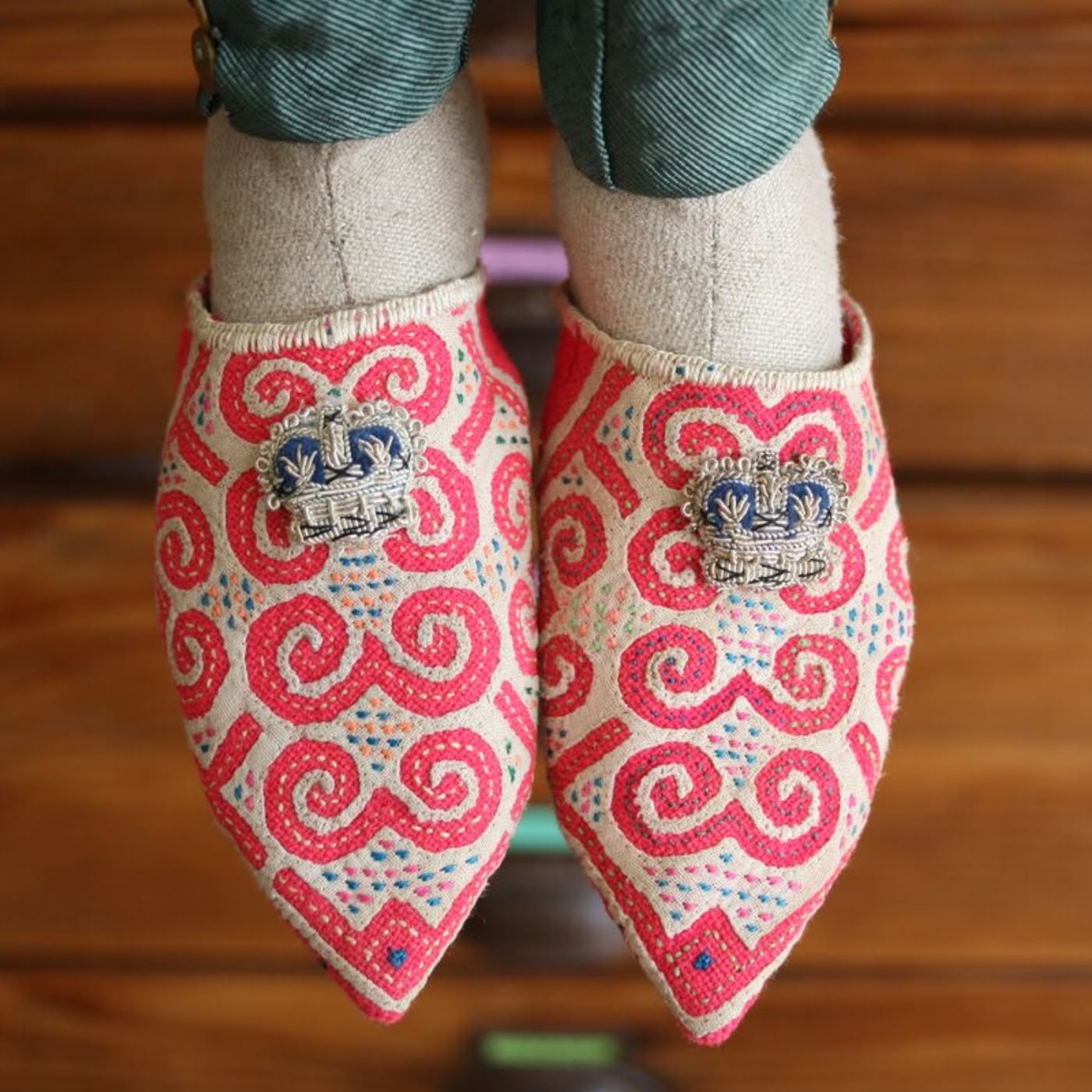
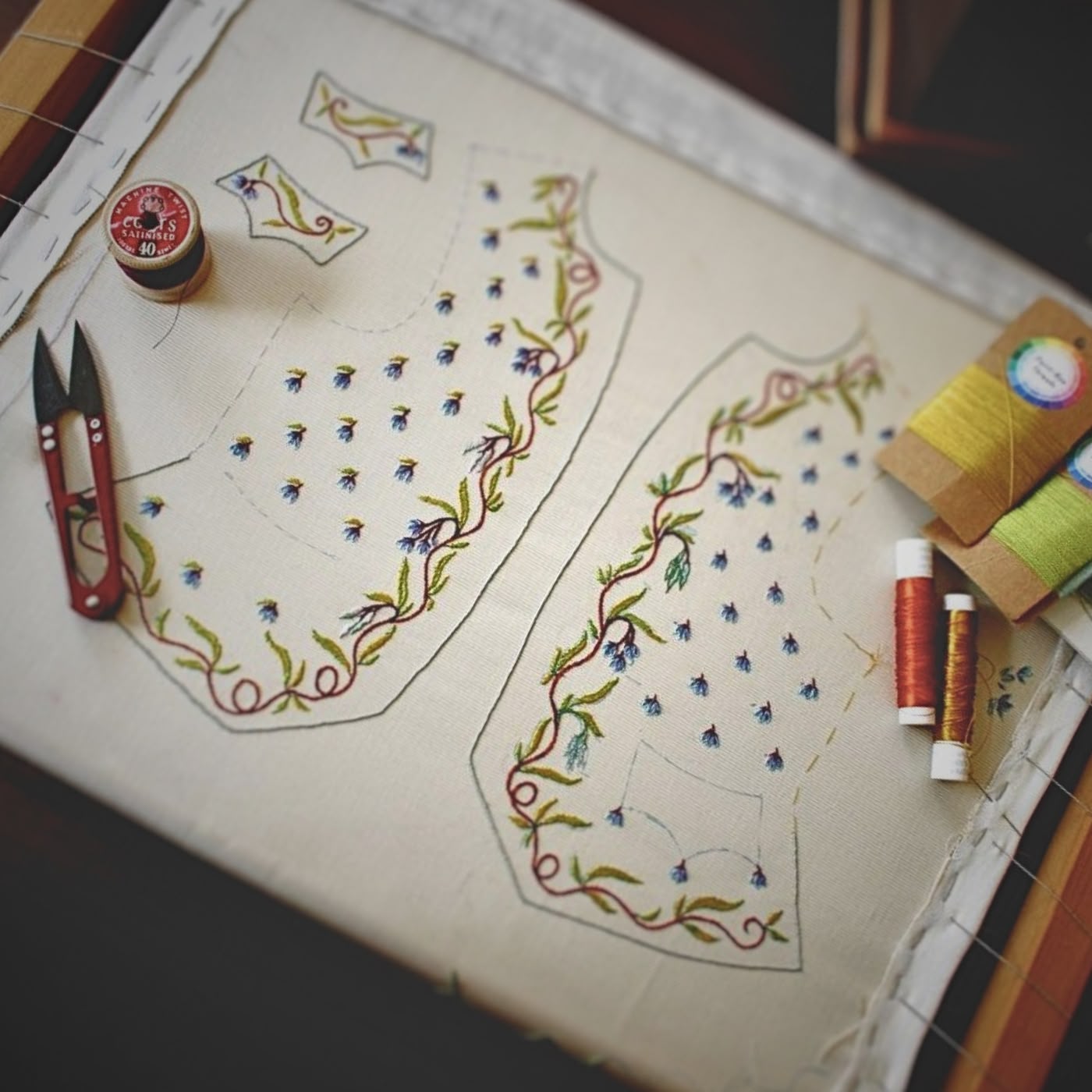
What equipment did you use in the creation of the piece and how was it used?
I have hand-stitched his body as it made for a more precise shape.
I began by machining his Banyan with my Bernini, I now have one in our flat in London and one in Fremantle, lucky girl that I am. But I decided that machining gave too stiff a seam on such a small scale.
I remember when the Globe theatre first started and the wonderful Jenny Tiramani of the School of Historical Dress decided that all costumes would be fully hand-stitched to follow authentic construction techniqes and to give a softer profile. And she is right.
I used a slate frame to embroider his waistcoat. And I ALWAYS use a thimble and have just ordered 5 more on the internet. Its very hard to get the perfect thimble, for me a tailor’s thimble size 7, and I am always losing them.
I am taking his photos with my Canon 1000D and filming him on my phone, a Motorola Moto G4. I then edit the films and photos together in Final Cut Pro X.
Take us through the creation of the piece stage by stage.
While doing all the research I was also trialing making the body. I had a lot of practice at this as that was one of the main tasks with the handicraft projects I worked with: to develop dolls and toys based on their traditional imagery.
This process always involved a lot of trial and error to get the shape and decoration right, plus getting other people’s approval that it fitted their vision.
In Tibet we made dolls dressed in traditional costume and every year we made an animal toy and puppet to fit in with the Tibetan calendar.
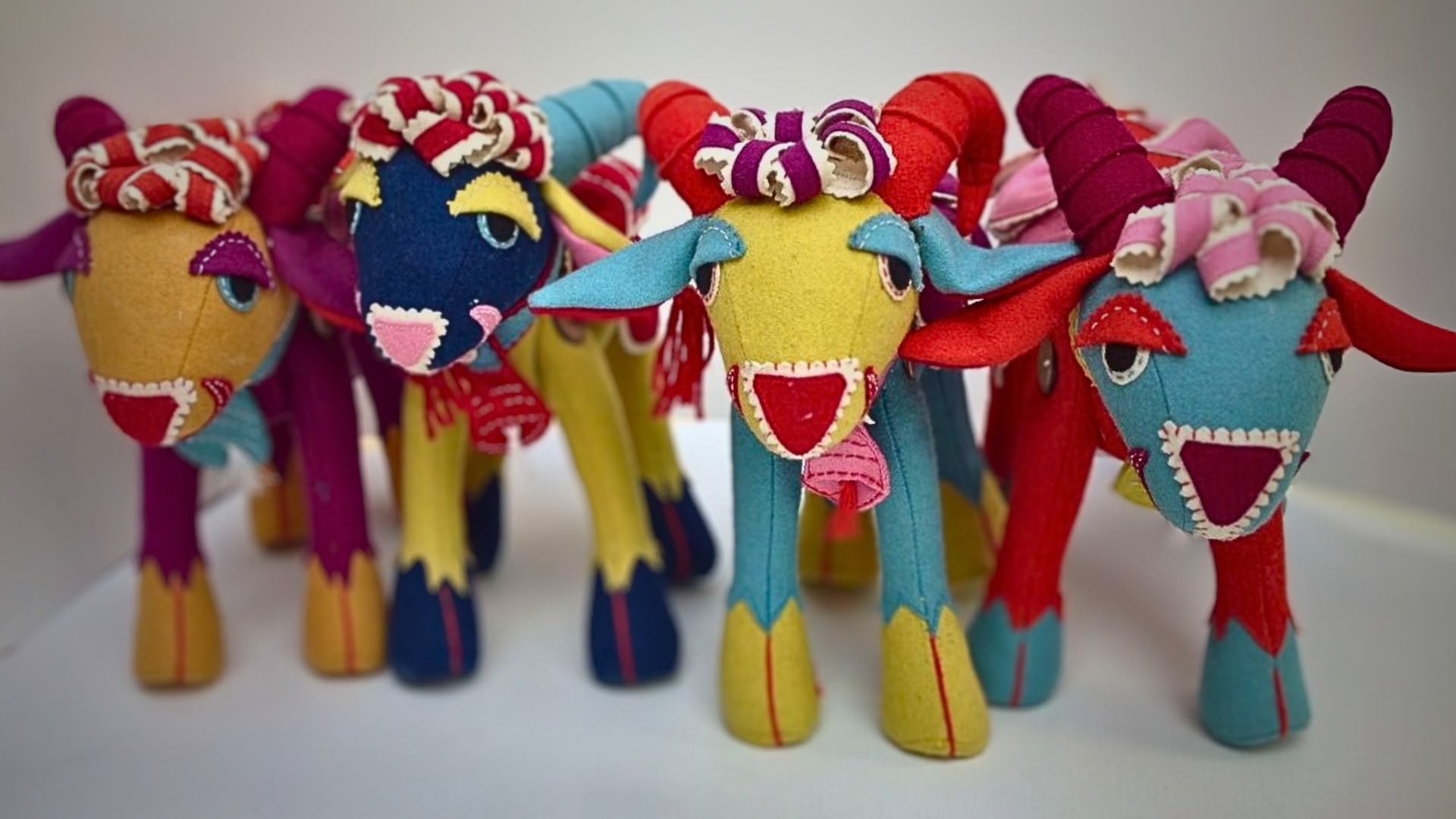
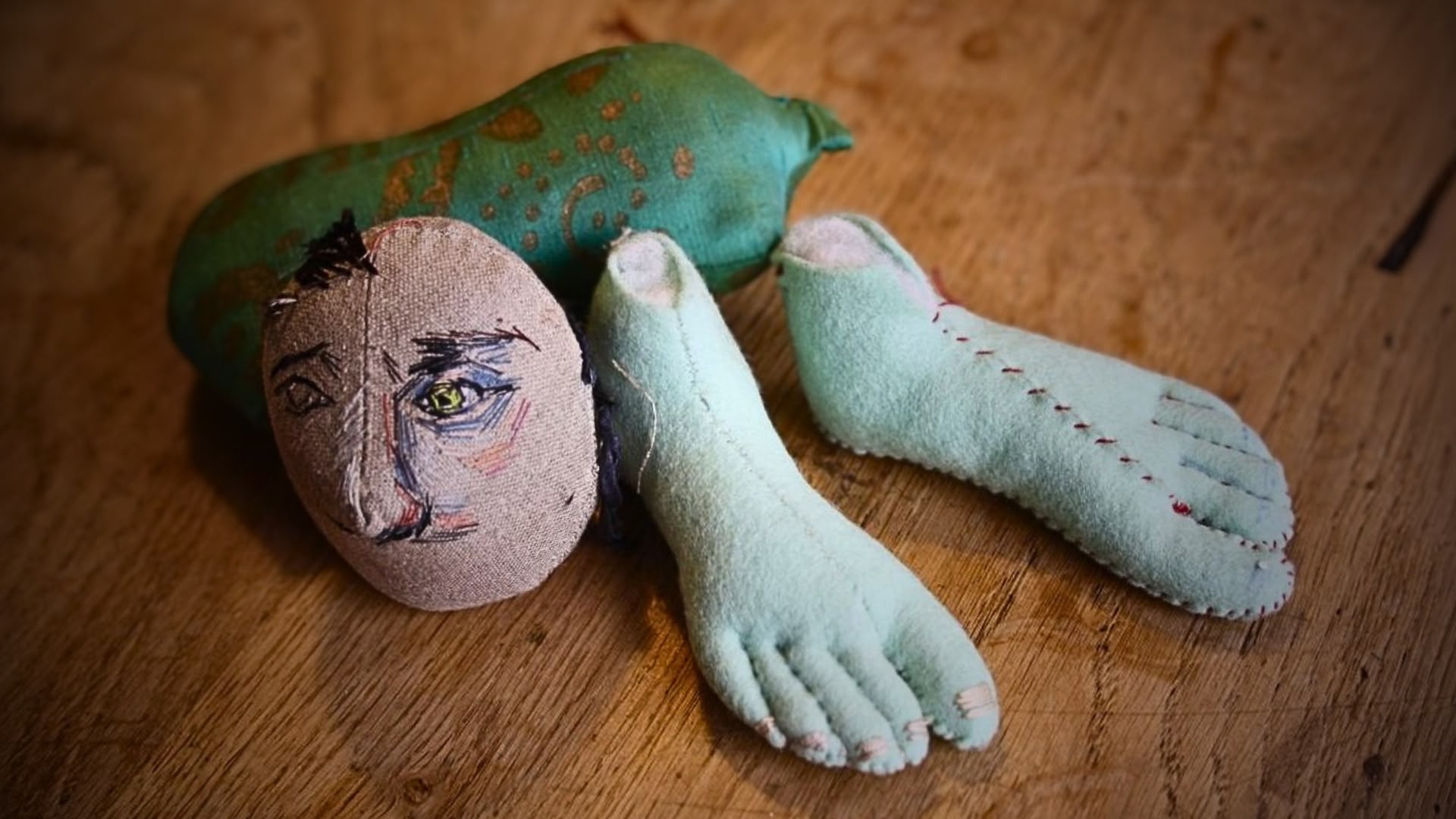
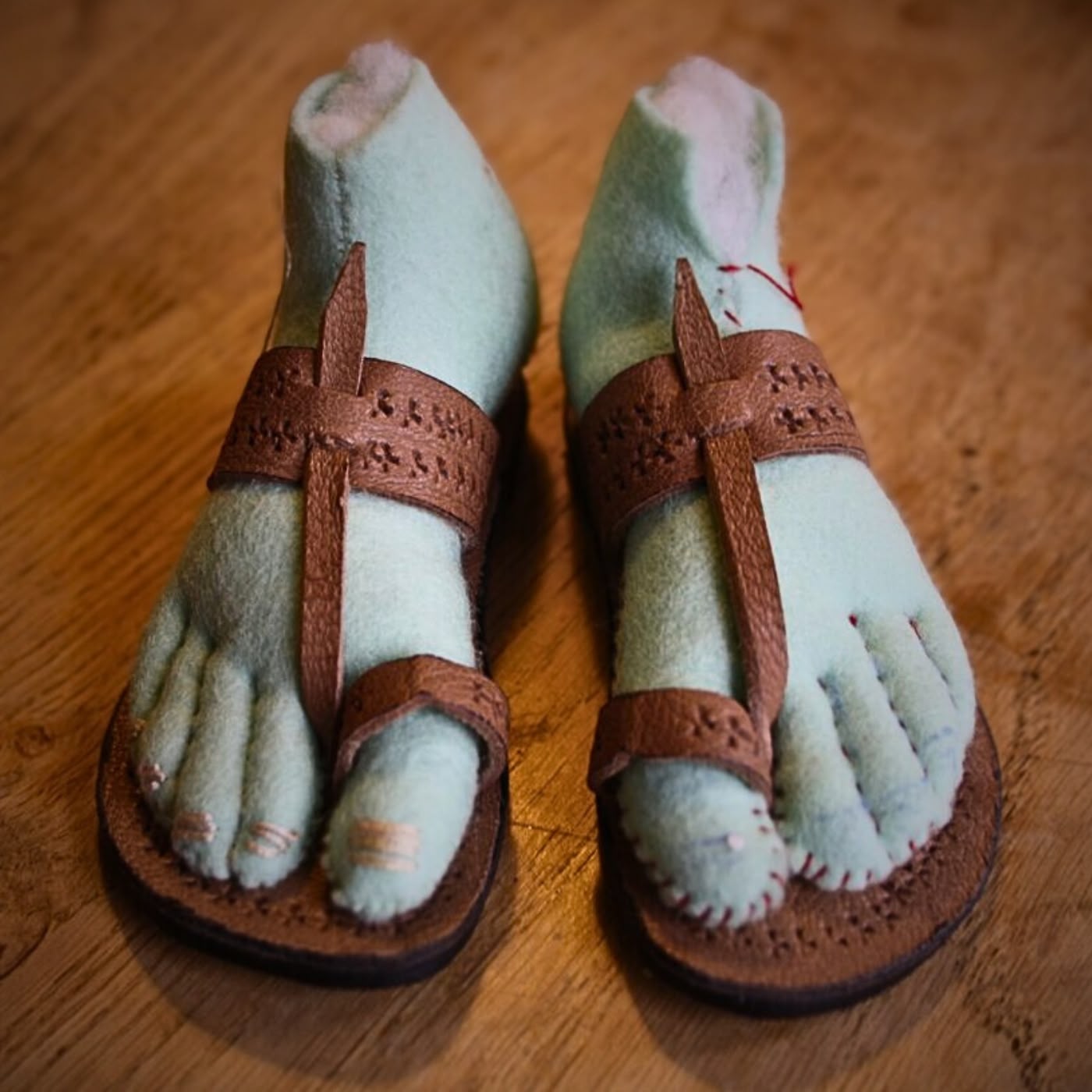
I decided to make my puppet one-third scale. I based his body shape on the pattern that I had made for the half-scale stand for the students, changing it to third scale. I made a lot of versions of his torso, limbs, hands, feet, and head. The body parts mounted.
Most of these were taken apart, the pattern adjusted and then remade. I perfected his feet and hands at night in my hotel room in Turkey where I was running a craft workshop. I am not sure what the cleaners thought of the selection of hands and feet arrayed on my table.
I gave one of these trial feet to the shoemaker in our street in Mumbai. He sits on the side of the road repairing shoes and also makes miniature sandals for keyrings. So he made me some perfect chappals for when my botanist visits India.
The hardest was the head shape and I am still not sure that it is right. I also wanted to get his neck right, in the right position and flexible to enable his head to move.
The solution that I came up with is that the torso has a neck bulge over which a separate, looser neck sleeve sits. This neck sleeve is unstuffed. This means that his head stays upright but has the flexibility to turn from side to side and to nod.
After perfecting the body shapes I now needed to work on the joints. I tried several different techniques, button joints, magnetic, and finally settled on bead joints. I found some perfect large wooden beads in the local haberdashery shop in Mumbai.
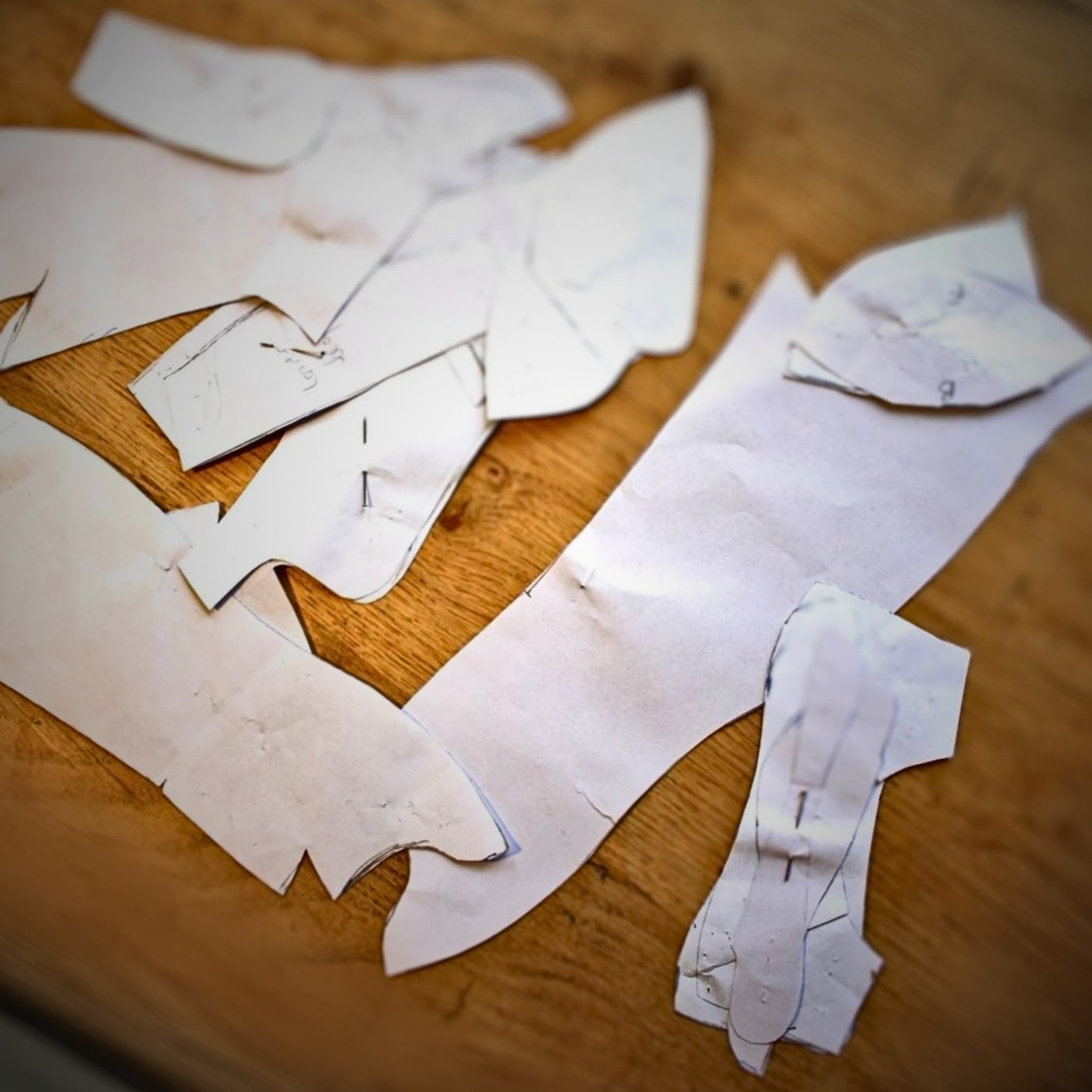
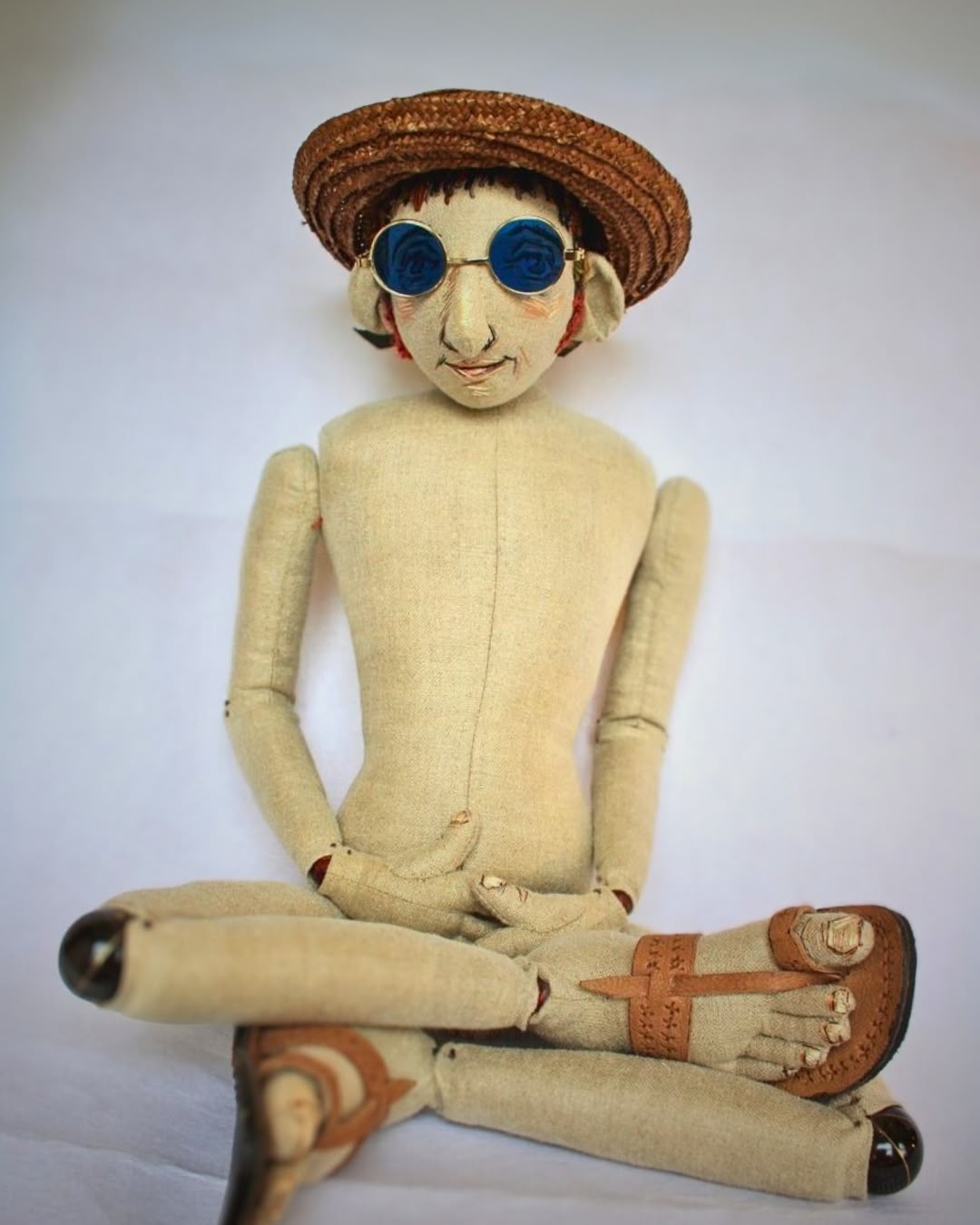
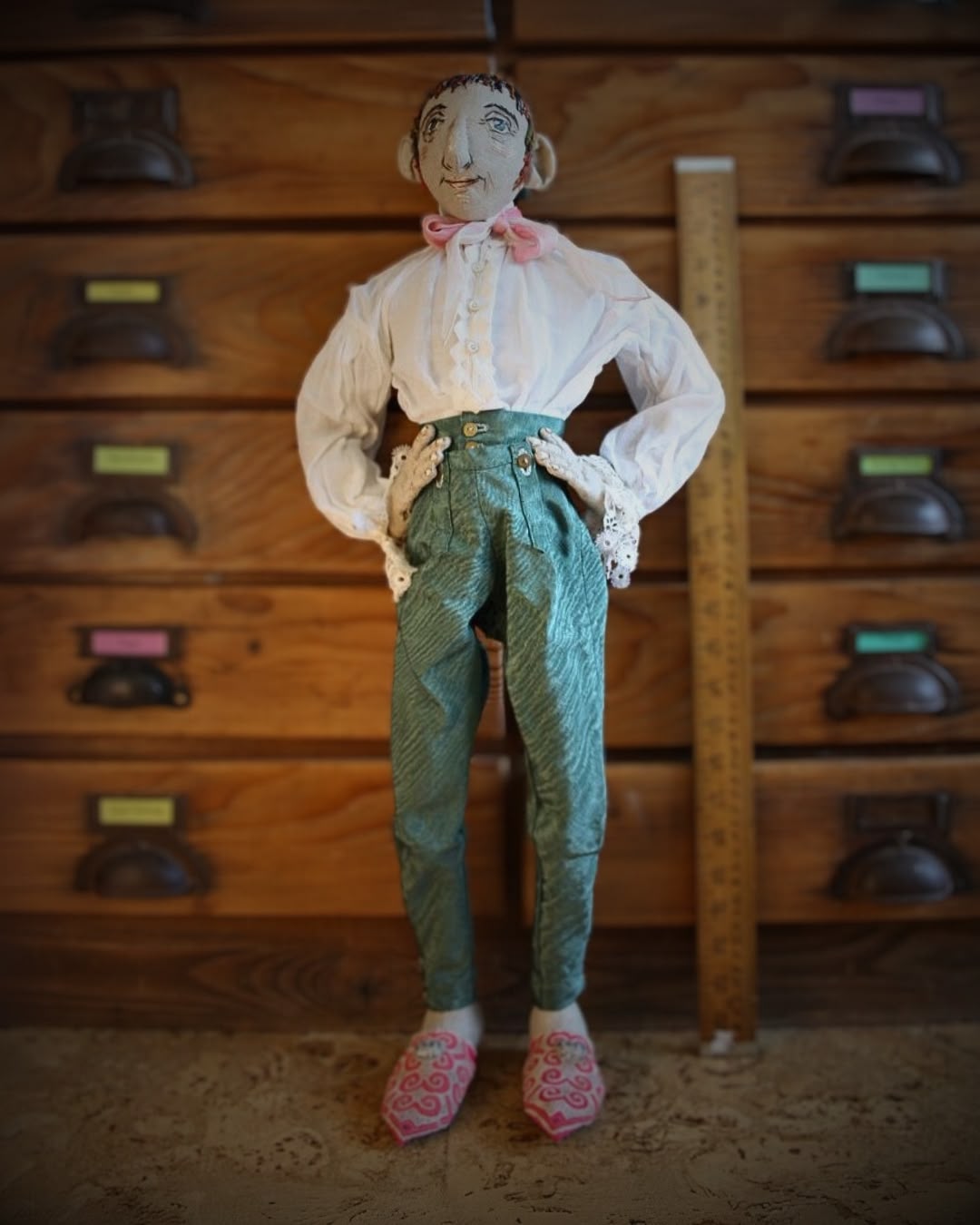
It took lots of experiments to get it right. I tried putting magnets in his hands and hips so that he could stand with his hands on his hips. But after putting on his clothes the magnets weren’t strong enough.
I did put weights in his bottom so that he sits with ease, and weights in his feet. This weight gives him a certain solidity and presence; he is not just a rag doll.
When making the trial shapes I stuffed them with nylon filler. I felt that this was too bouncy. I thought that cotton filling would be better, but it is really hard to buy in haberdashery shops in Australia. Luckily I was going back to Mumbai, so I bought a cheap pillow which are always stuffed with cotton waste. They aren’t good to sleep on as they compact down to rocklike hardness, but are perfect for stuffing a French botanist puppet.
The cotton stuffing packs in and makes his limbs nice and firm. In his hands I put pipe cleaners down the fingers so that they can be bent and will stay that way when he wants to hold something or point at something.
Now I could start dressing him. Of course, first he needed a dressing gown and slippers. Dressing gowns of that period for men were called Banyans, modelled on an eastern men’s robe. I loved making his little slippers and decorated them with metalwork crowns that I had bought at the Hand and Lock conference a couple of years ago. They had drawers full of extras of their badges. It was hard not to buy them all up.
I have enjoyed trawling through all my old costume books, adapting patterns, playing around with scale and researching design.
I plan to make him outfits to fit each of his trips. He will be coming with me to Nepal in October where I am working on a community art and public engagement with science project.
I have already made him a lungi out of an old lungi of my husband’s, and he has his chappals. That outfit is suitable for the southern part of Nepal where we are running the project.
When he is in Kathmandu he will need an outfit traditional to the hills region. And then there are all the fashions through history and he may have to update his wardrobe from the 18th century. I can see that this is going to run and run.
What journey has the piece been on since its creation?
I am finishing Citizen Labillardiere here in London and then he will begin his return trip to Australia, 226 years after his first visit. He will also come on my travels, Wales in August and Nepal and India in October. He is also hopefully going to be part of a botany exhibition in 2019 at the Mundaring Arts Centre.
I have work currently touring Australia as part of the Machines and Makers exhibition.
I will be posting updated video diaries on my website and on facebook, with added detail about his costumes, their materials and the historical background.
For more information visit: susievickery.com
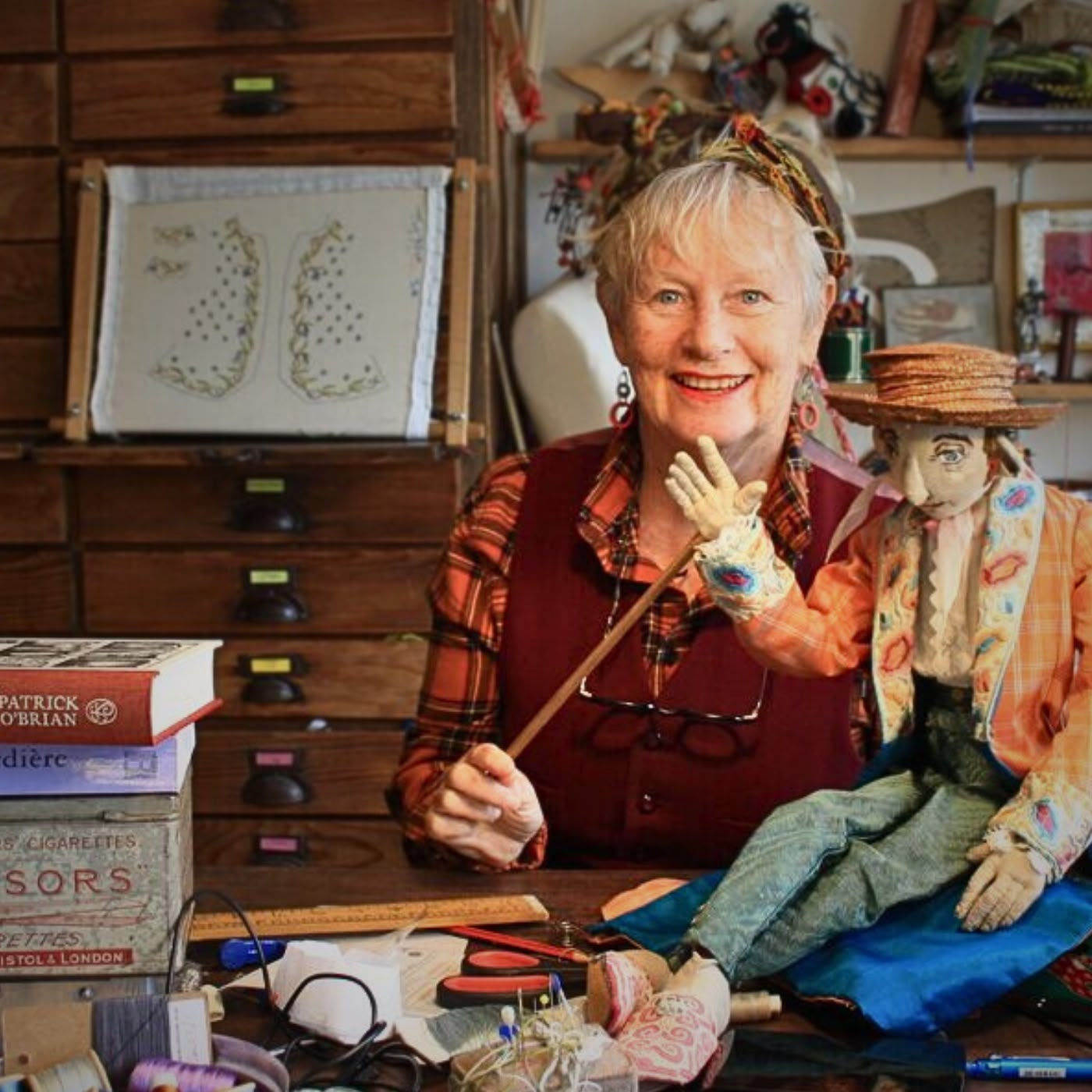
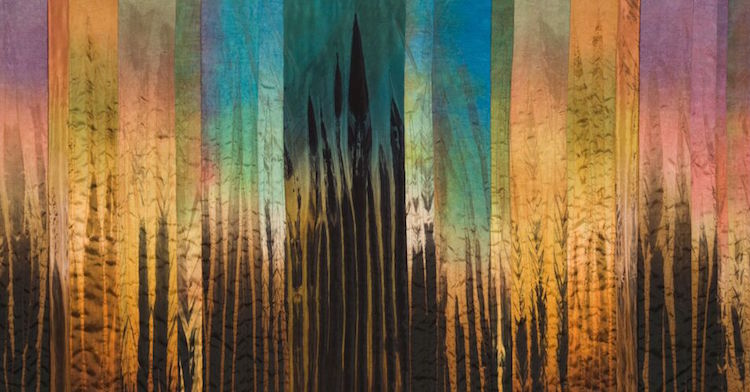
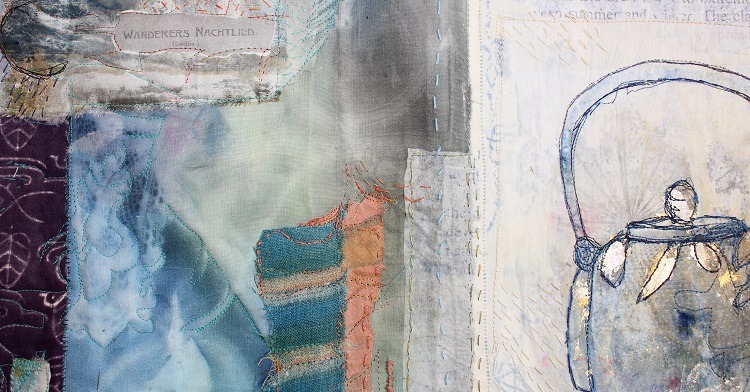
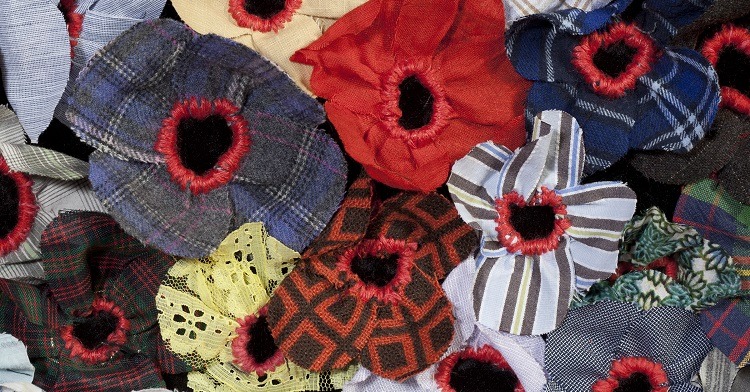

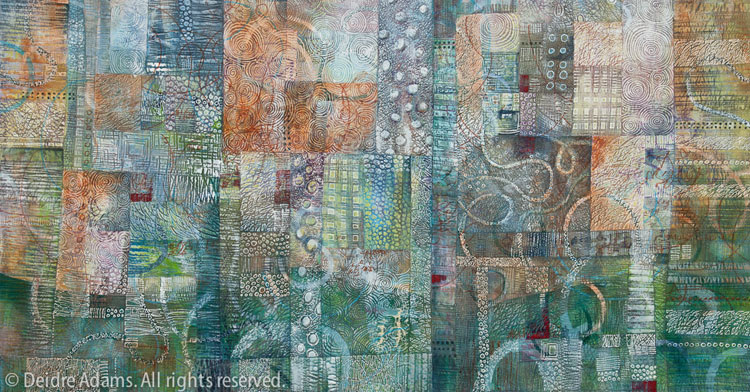
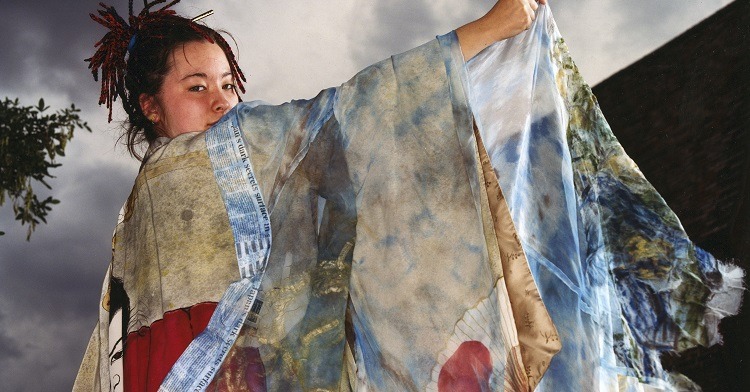
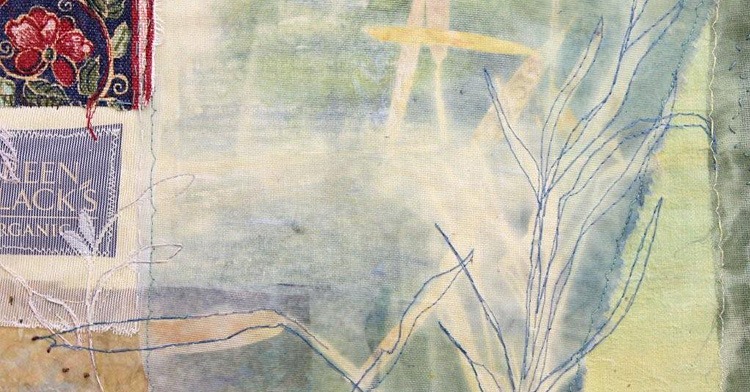
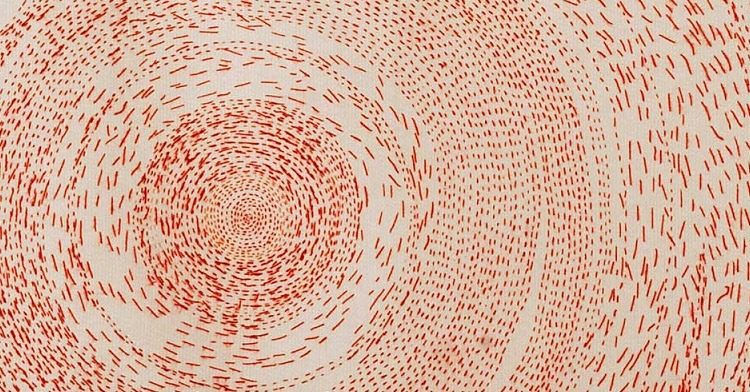
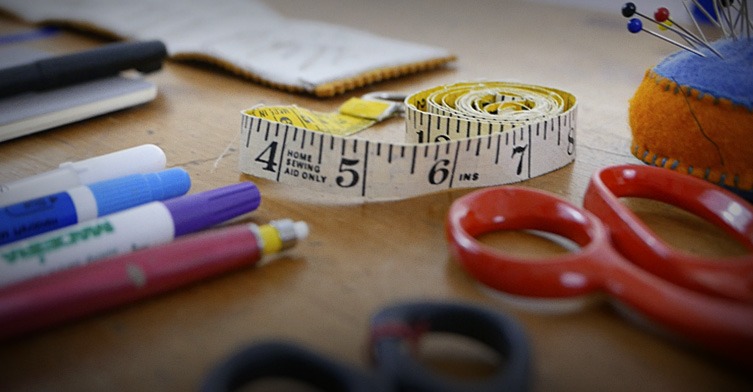
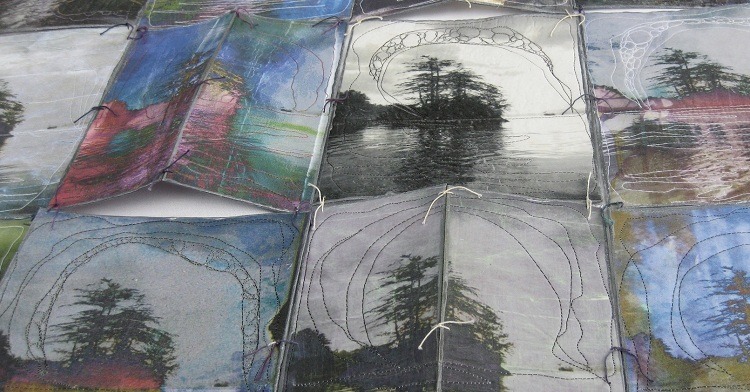
13 comments
Gill Tyson
What an incredible article – thank you textileartist.org (I’ve only just seen this)! An amazing project created by Susie Vickery with the most beautiful artistry to produce this wonderful work. I was spellbound by the research and level of detail in your work Susie. What a fabulous project – I would love to see your Citizen Labillardière – is he on tour in 2023?
Joanne Noragon
I came over from Margaret Butterworth’s Blogger account. I am the daughter and great granddaughter of exquisite needleworkers. I love your concept and execution!
Louis de Villiers
We were alerted by another talented fabric artist from Fremantle about Citizen de Labillardiere’s brief sojourn at the Mundaring Arts Centre. And what an incredible experience it turned out to be. I hope he will be able to continue his travels, with his wardrobe and other effects, or find a permanent home, so that audiences can continue to be awed and delighted. The background stories and short videos on Susie Vickery’s website continue to provide enjoyment. Merci beaucoup!
Sian McQueen
This was an absolutely fascinating read, you have been so meticulous in your research in all areas of designing and making Citizen Labillardiere. It must be great fun designing his travelling clothes for the many places he has and will visit in the future. I love his chappals for India and his beautiful slippers & dressing gown.
I live in West Wales and was unwell during the Festival of Stitch, so was unable to visit. I have only found you now because I was looking for new tutors for our textile group.
What a surprise I had when I seen that he was coming to Wales, and sadness when I realised he’d already been and I had missed him, he was so close.
Thank you so much for sharing your story, you have had an amazing life and putting all your talents into to Citizen Labillardiere for his and your journey back to Australia is a wonderful tribute. Enjoy the rest of your journey together.
I will look forward to your updates, I’m well and truly hooked now.
Ruth Petersen
Fantastic article. Is there any more information about where and when we can see Citizen Labillardiere in Wales please?
Susie Vickery
Hi Ruth, Citizen Labillardière will be coming to Swansea on the 13th August. He will be accompanying me as I run a portrait workshop as part of Swansea Festival of Stitch. Come and meet him. Susie
Bonnie Halfpenny
I can’t believe you published this wonderful piece- I have been wondering how Susie does her animating- and here is a great part of the answer- thank you so much! Your website is invaluable to me, in terms of information and inspiration.
Sue Hibberd
Great article. I shared to my textile page on Facebook.
Deb Clarke
The detail in your research and the experimentation you carry out to complete a piece is just amazing. Creativity flows from your brain to your hands obviously. Very special learning. Glad you shared…
Gaye Shepherd
Fasenating story.
I am so glad citizen Labillardiere is coming back to Australia and will share to good and bad changes he has witnessed over 226 years.
Love your work and love of craft, travel, art, design, community, nature, history, and joy of life.
Thank you Susie
Wendy Sonnenburg
Your puppet story is intriguing and the process of his development was most educational for me. Love the concept – especially the horticultural and historic content – as well as the way you became so involved in the the detail of the concept. A wonderful story, which is a great example of concept development for any artist in any medium. Thank you.
Christiane Maurer
I really loved your interview. The concept of M. Labillardière is great and tells an important story.
I like it how you go on and combine different crafts into perfection and I found it especially inspiring how you show all the details of getting the project right. It sounds like a lot of fun, too. Made me immediately want to take a course in historic costume making.
Thank you for sharing!
Susie
thanks Christiane, he really does have a great story. I am excited to be able to tell it further. I loved reading his journal. I am currently making him a 18th coat so that he can start stepping out. Susie